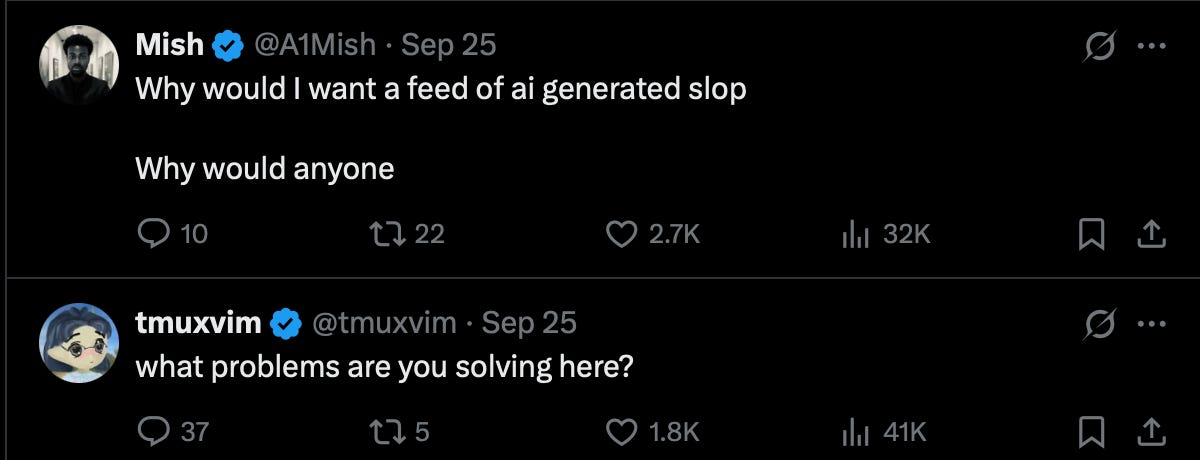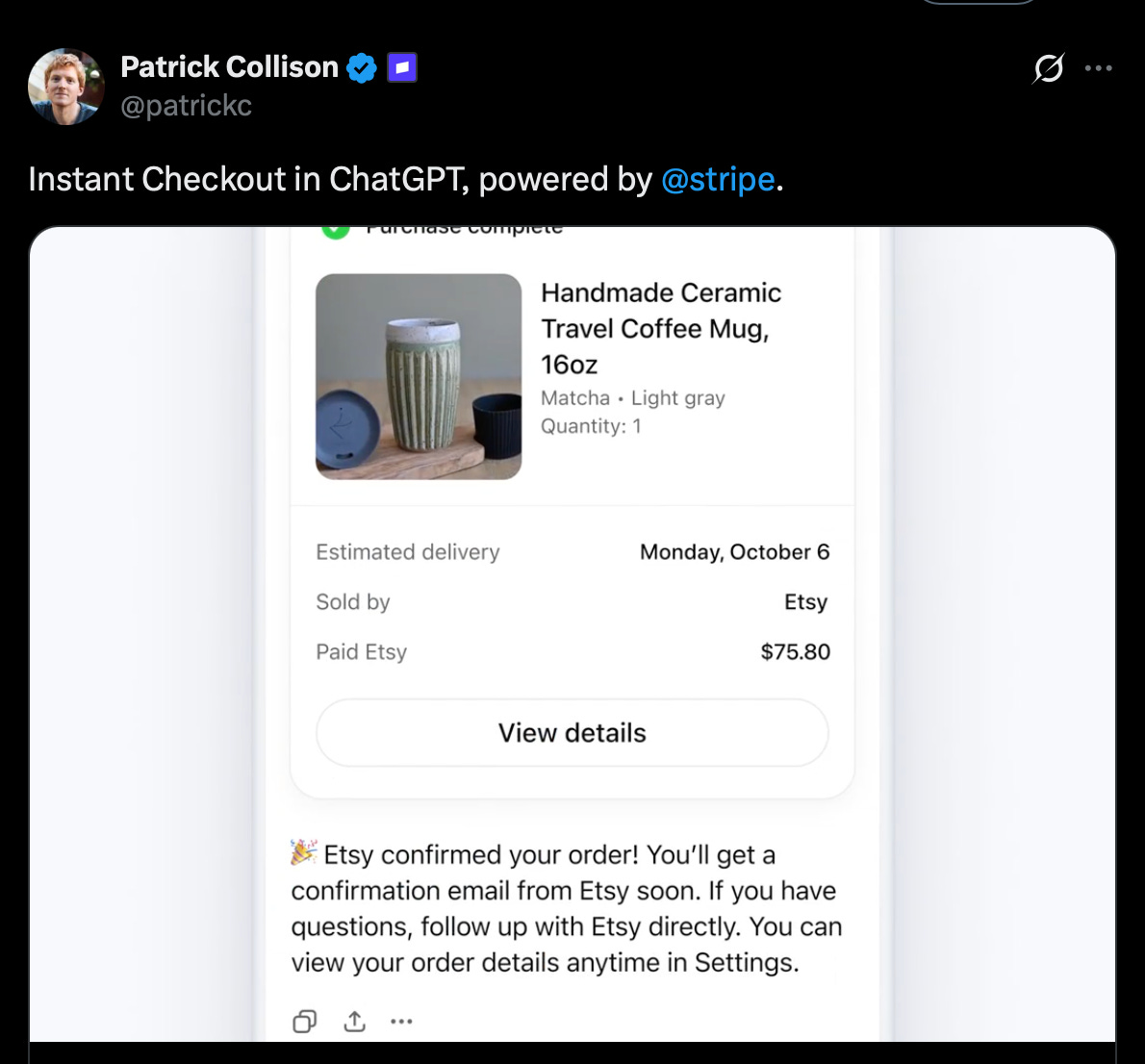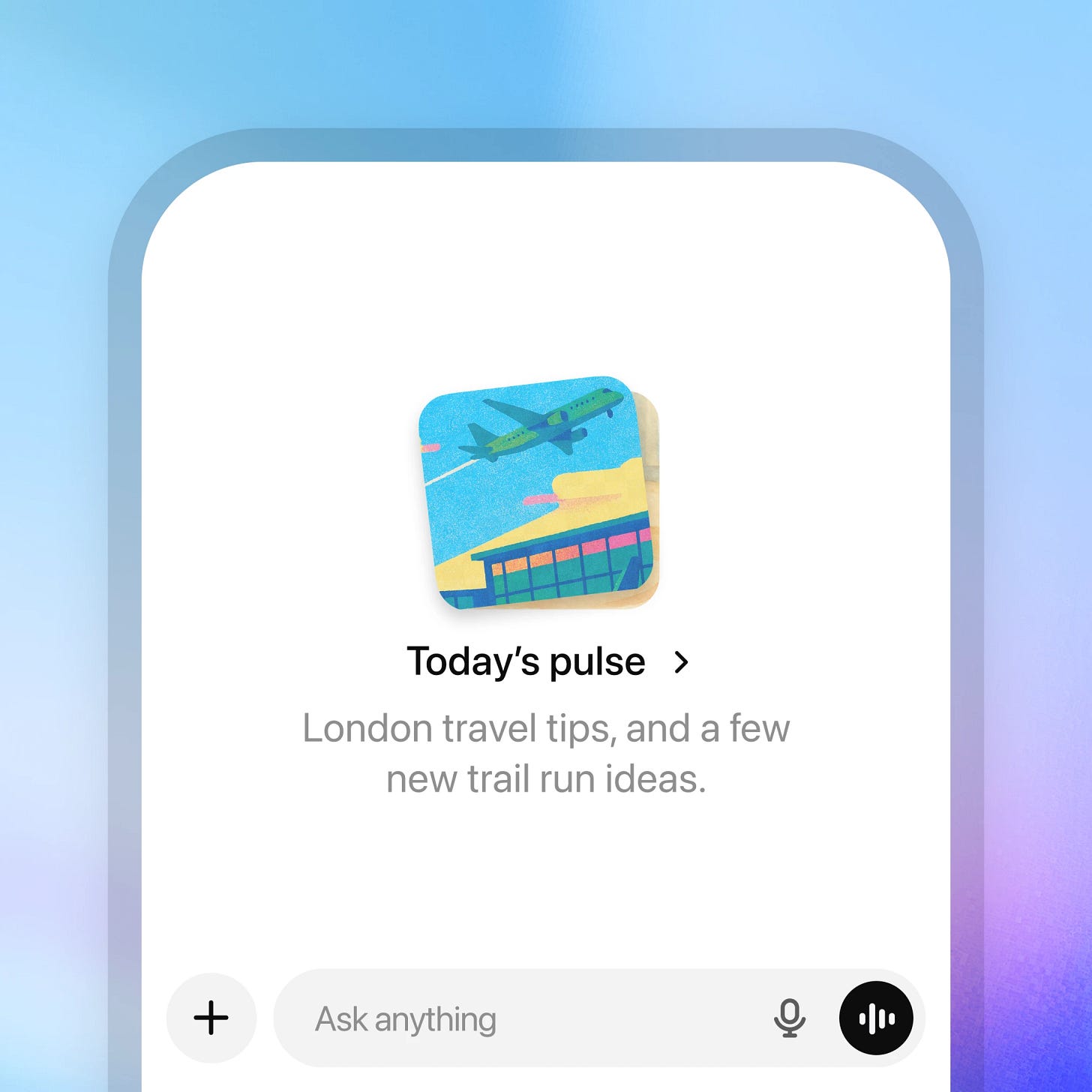3 AI product trends rewriting the next decade.
The launch of ChatGPT’s Instant Checkout, Sora, Meta’s Vibes, and ChatGPT’s Pulse are big signals on the next generation of product trends.
The last 2 weeks were huge in the AI space for product launches.
The launch of ChatGPT’s Instant Checkout, Sora, Meta’s Vibes, and ChatGPT’s Pulse are big signals on the next generation of product trends.
1️⃣ AI Social Networks
We are in the early days of this, but AI social networks are coming.
Last week, OpenAI released a social iOS app just called Sora (invite-only for now) powered by their latest video and audio generation model, Sora 2. The big breakthrough in this model is the incredibly detailed audio generation capability, the lifelike human movements, and of course the “upload yourself” feature that allows you to superimpose yourself onto any other scene.
Here’s an example from the OpenAI press release:
Meta similarly released Vibes, a Feed dedicated to AI-generated content, which many users are not-so-lovingly calling the “slop trough”.
The consumer reaction, particularly to the Meta launch has been mostly on this vein:
And I agree: literally no one asked for this.
But just like no one asked for ChatGPT or LLMs, the use cases will come.
Sora gives us an early hint into where this will go: a next-gen of social networks where you can generate funny, hyper-realistic videos of yourself, your friends, or cultural icons. The more imaginative and chaotic, the better.
💡 Builder Takeaway:
There’s massive disruption potential here away from traditional social networks. Traditional social networks historically have not been able to reinvent themselves with technology step-shifts (see MySpace, AOL, and tumblr). There will be a new wave of next-gen social networks uniquely positioned to ride the AI wave.
On a micro level, there’s room for a new category of AI-video and creative agencies who will create AI-generated ads for brands and run mass A/B tests at scale.
On an individual level, you’ll also see new business models that blend ghostwriting + deepfaking (with consent) to create content for personal brands. (Imagine creating the next Simon Sinek, but with a deep fake).
2️⃣ Agentic Buying
OpenAI just launched instant checkout inside ChatGPT, starting with Etsy. Right now, it’s limited to one item per purchase. But that’s not the end of this story.
The next big issue to solve will be building trust into these transactions by surfacing verified, non-AI generated reviews.
And of course, Instant Checkout is just one small step towards a broader theme of Agentic Commerce: eventually your agent will just buy things for you. Imagine giving your agent a budget, parameters, and a goal:
“Book me flights to and from Japan in February under $1,200 for a 2-week trip. I must be able to collect Aeroplan points, 1 stop or fewer flights only but no layovers longer than 8 hours, ideally leaving after 5 pm and returning on a Sunday.”
Your agent will monitor prices, compare flights, and execute whenever the perfect flight becomes available. No more monitoring flight prices, no more Google flight alerts: just one simple workflow where your agent works for you in the background.
💡 Builder Takeaway:
It’s now a business imperative to make your products “agent-discoverable” and compatible with Agentic Commerce Protocols.
Invest in visibility within AI responses, aka SEO for the age of AI-generated responses. (See my post on optimizing your product for answers.)
Expect entire businesses to form around LLM optimization, just like SEO agencies did for Google Search.
3️⃣ Background Agents
Amidst all these announcements came another big one: ChatGPT Pulse. Sam Altman called Pulse his “favourite feature so far” and described it as a “super-competent personal assistant”. Essentially, Pulse works for users in the background to provide updates on topics they’re interested in.
ChatGPT positions Pulse as a product “Meant to work for you, not to keep you scrolling”.
(Sure, we believe you Sam 😅)
Of course, the consumer reaction on this launch was also not super favourable, with many users pointing out that it sounds like a ploy to get more data to serve ads to users.
But again, the immediate consumer reactions don’t predict the inevitability of where this feature is going.
This is a huge product shift in the way we interact with LLMs because:
The agent starts working for you in the background.
The agent messages you proactively, instead of you messaging them.
Over time, Pulse and similar background agents will evolve to do more background tasks for humans like making purchases, booking appointments, and responding to emails.
💡 Builder Takeaway:
Think about how background agents could extend your product. For example, take an enterprise use case for Pulse: internal agents that “pulse” employees with relevant insights to their roles (e.g., client news, project updates, or competitive moves).
Final Thoughts
These three shifts represent huge opportunities for builders. The next wave of products will be driven by background agents, agentic commerce, all mixed in with a bucket of AI slop…sorry, I meant AI social networks.
💬 How are you taking advantage of these trends?







